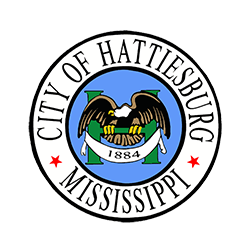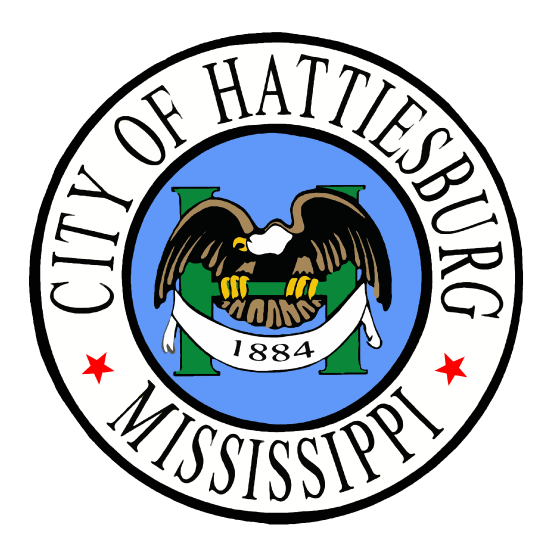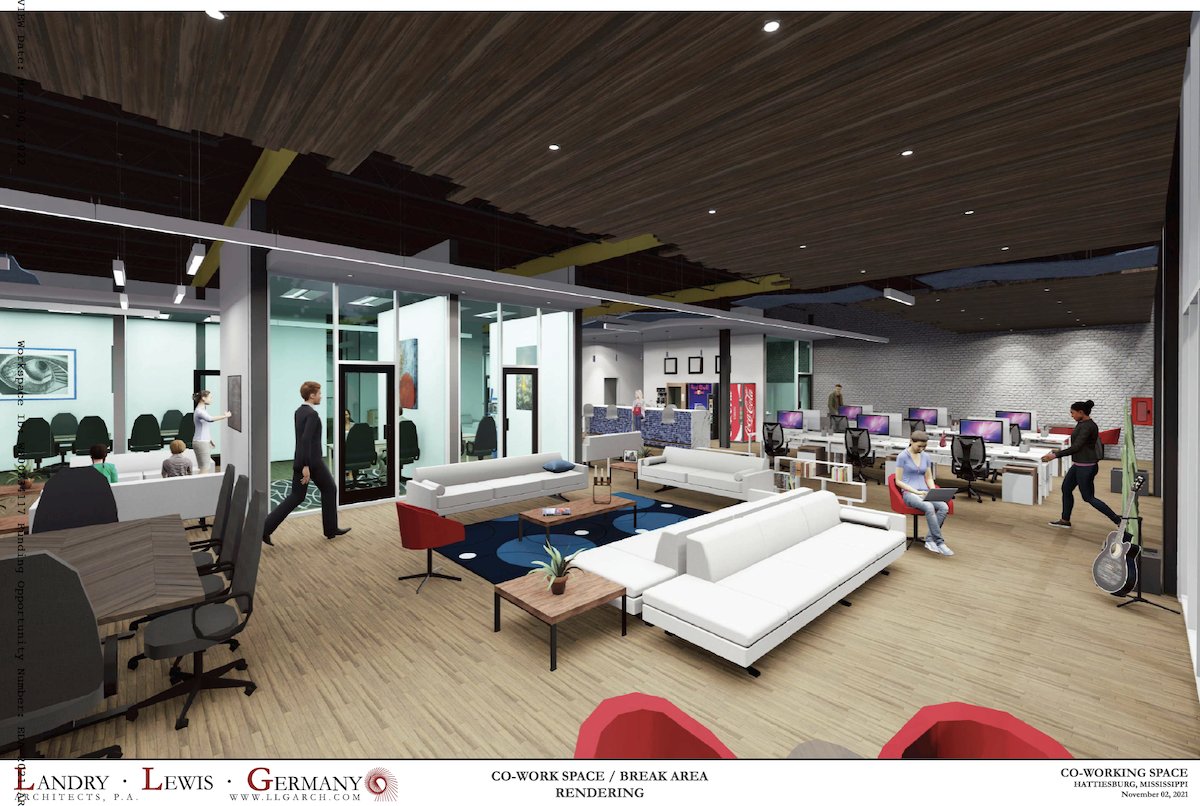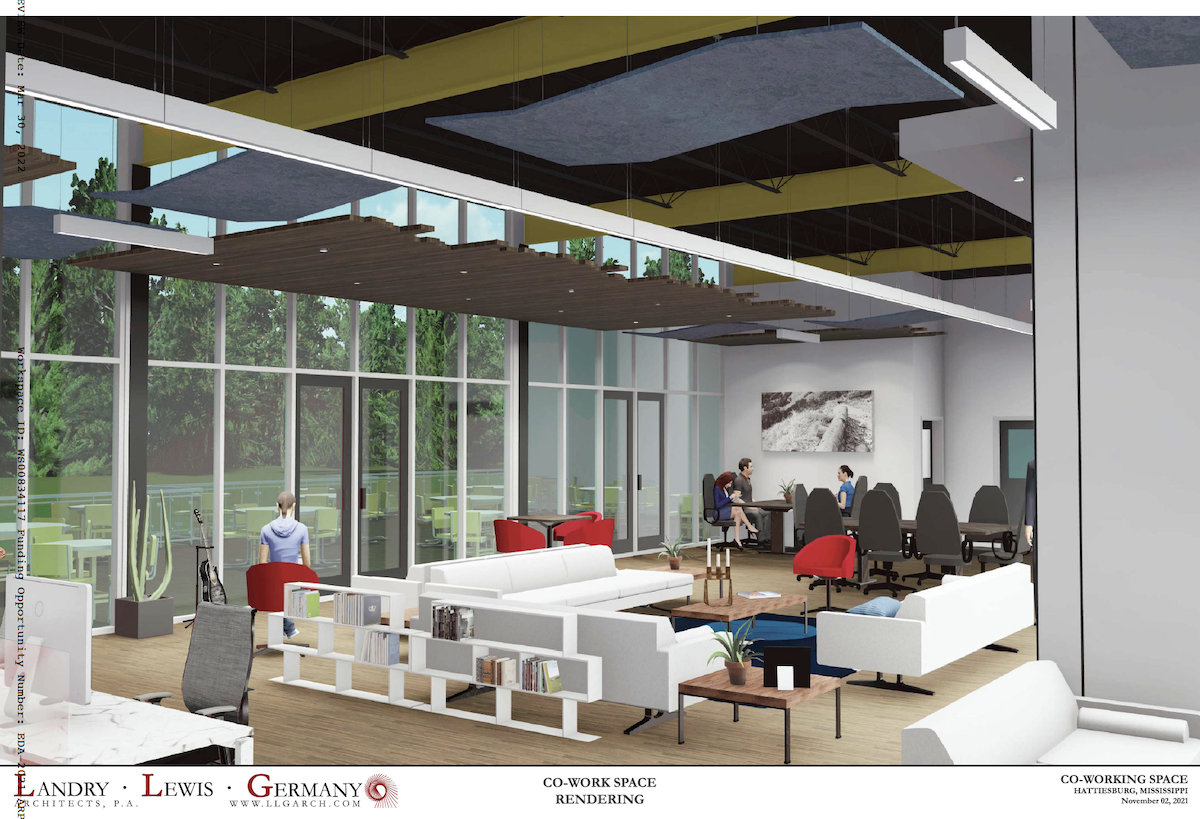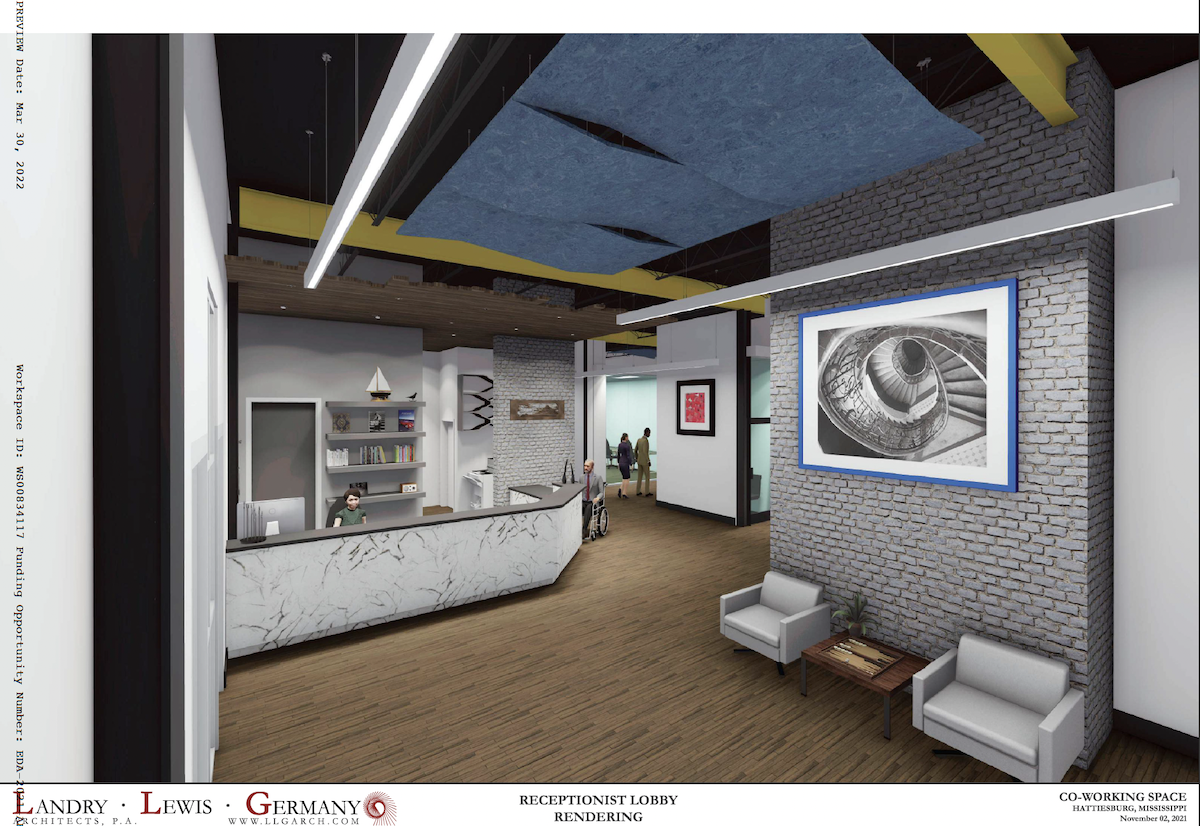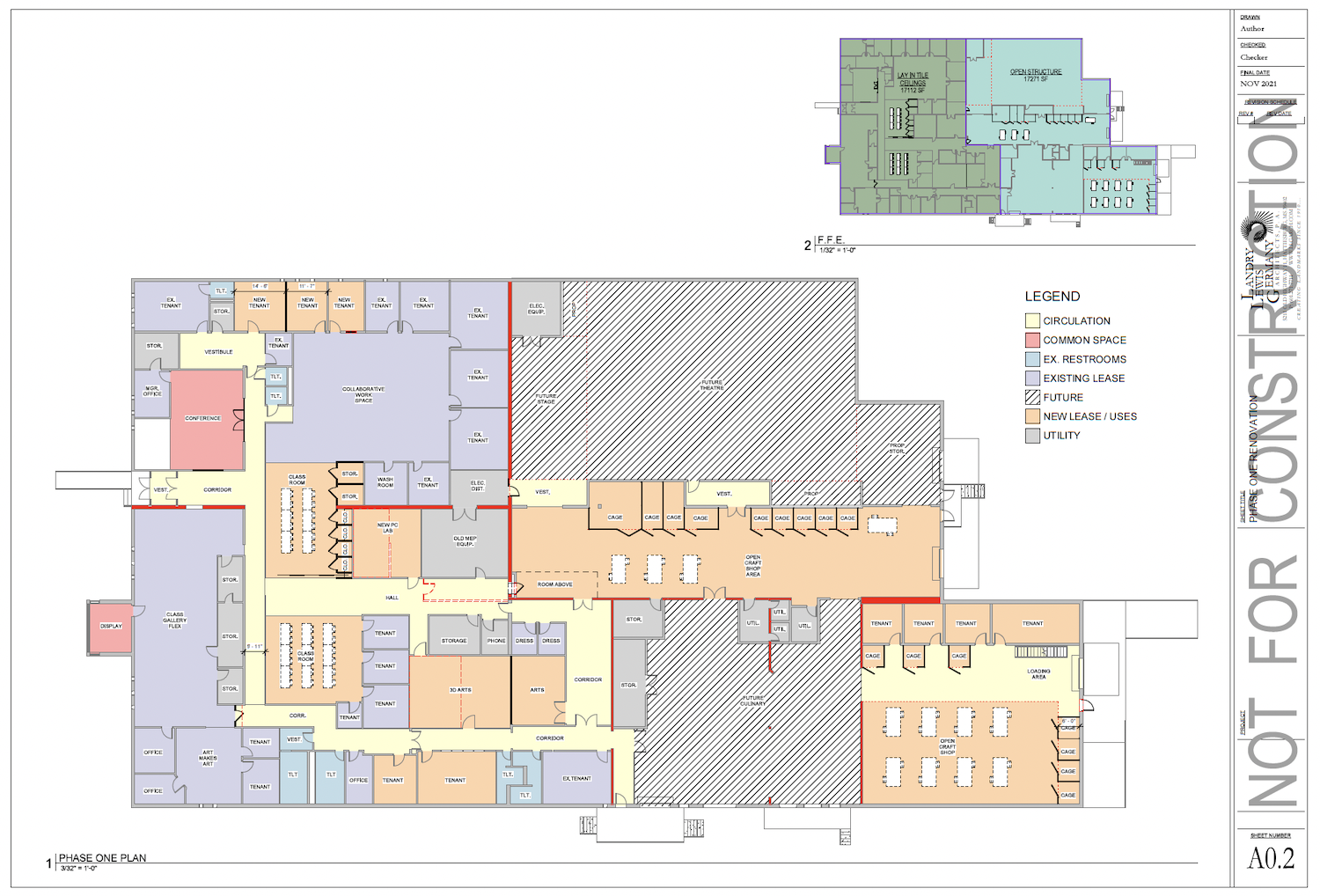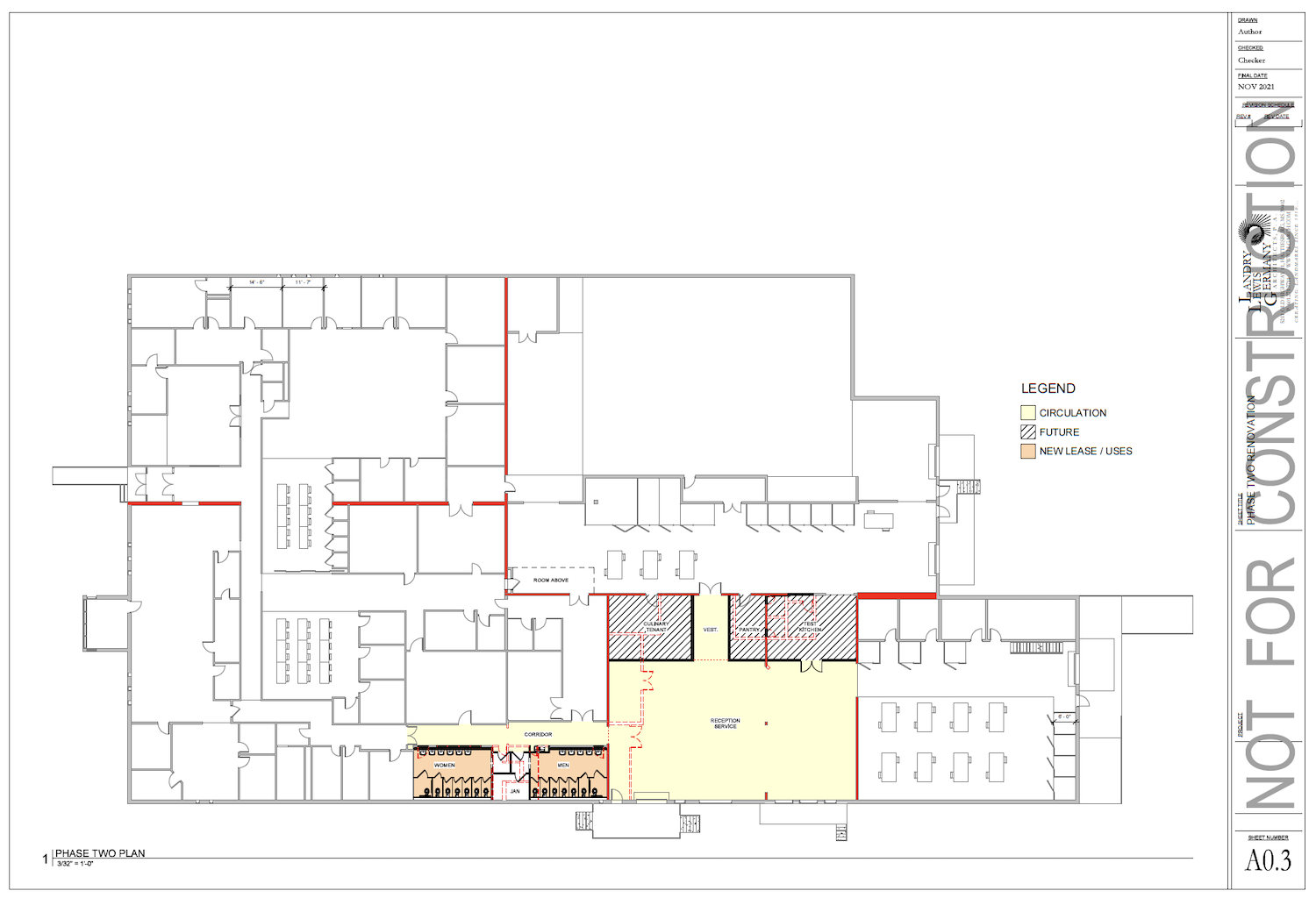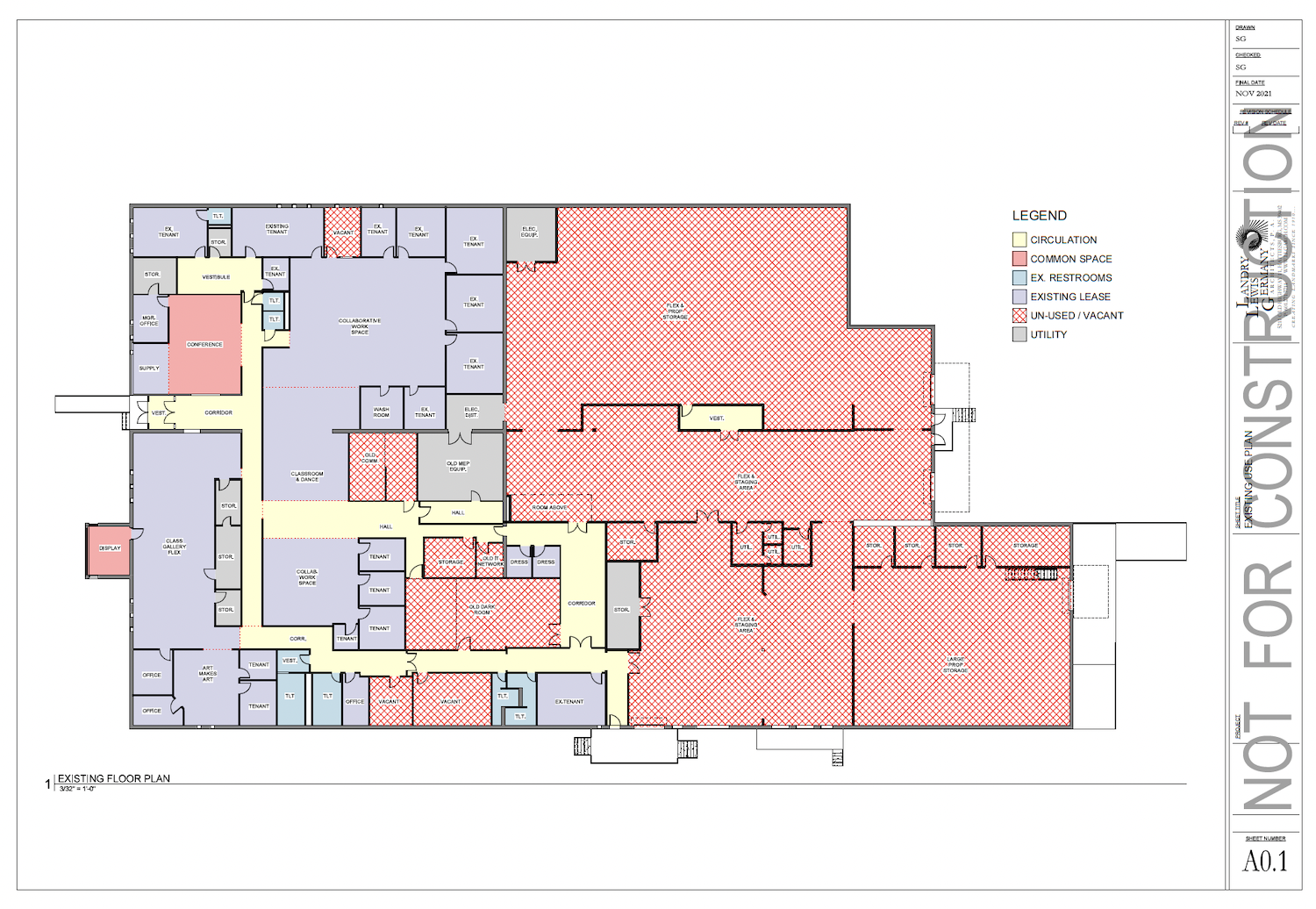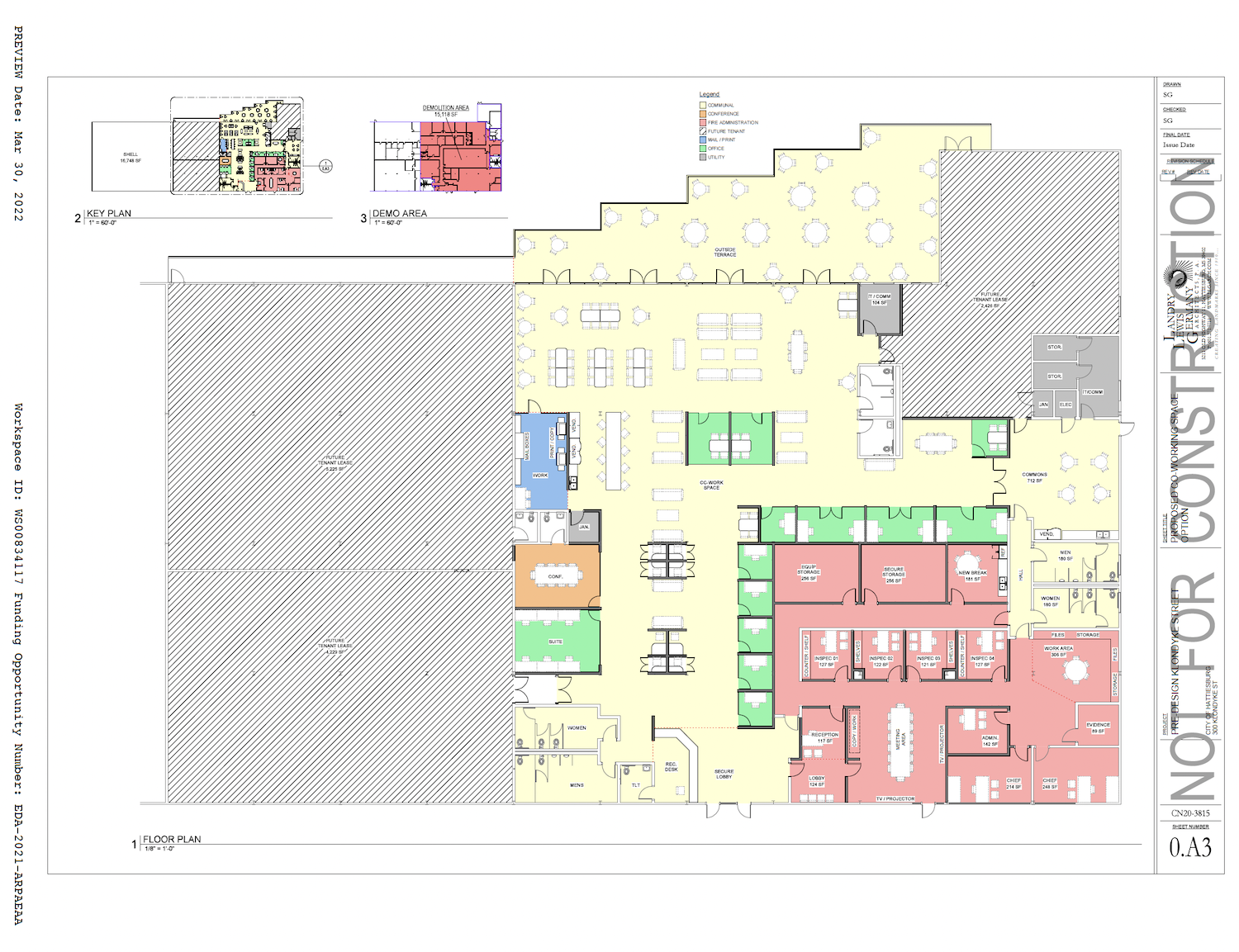Bridging Divides, Building Opportunities: Cultivating Equity Through Entrepreneurship
Bridging Divides, Building Opportunities:
Cultivating Equity Thorugh Entrepreneurship
Project purpose:
The project will repurpose two city-owned buildings in Downtown Hattiesburg, Mississippi to create co-working space for entrepreneurs and remote workers, as well as additional studio space for working artists.
Project detail:
The project involves two major elements, both aimed at providing workspace for current and aspiring small business owners.
Element #1 – Repurposing of the Klondyke Municipal Building
The first component of the project is the conversion of the city’s former police administration building into a modern coworking space for the city’s growing population of remote workers. The City of Hattiesburg recently opened its new public safety complex, relocating the police department administration and leaving their ~27,000 square foot building on Klondyke Street vacant. The city currently allows the regional office of the Mississippi State Department of Health to use this building while its permanent office is undergoing renovations. However, the city plans to convert a portion of this building into both a publicly owned coworking space while also allowing other spaces to be used by the fire department administration and a community space for the East Jerusalem neighborhood. The Klondyke building is not in need of major utility repair, as the city invested millions of dollars in 2016-2017 for its original renovation.
The necessary construction for this component consists primarily of repurposing the interior of the building and constructing new outdoor space. The requested federal funding would be used to renovate 10,850 square feet of the police station into co-working office space, build a 2,500 square foot outdoor terrace, renovate 4,200 square feet into offices for the fire department and community space for the neighborhood, open ceilings, re-work HVAC ductwork, re-circuit and redistribute electrical as needed, remove the
existing pre-cast exterior wall and replace with a glass storefront-style facade, and furnish the space.
Element #2 – Renovations and Additional Studio Space at the Hattiesburg Community Arts Center
The second element involves significant repairs and renovations for the Hattiesburg Community Arts Center. The Hattiesburg Community Arts Center is itself a repurposed building located in the former Hattiesburg American newspaper building, which was donated to the city in 2018.
The 35,000-square-foot facility officially opened with its current purpose in 2020 and currently houses 35 independent artists and other tenants. There are an additional 13 artists on a waiting list when additional dedicated studio space becomes available. Additional space within the building is used for community classes, youth programs, live performance rehearsals, and other special events. Despite the challenges presented to artists and the creative economy by the COVID-19 pandemic, the center has consistently operated profitably and at capacity. There are additional challenges stemming from the condition of the building, which sat vacant for several years before being converted. There are significant electrical, HVAC, and plumbing improvements that restrict the center’s future growth. The proposed EDA grant would be used to demolish and replace existing lay-in ceilings, replace lighting fixtures and controls with energy-efficient LEDs, install new partitions for storage closets, enclose the conference room, repair flooring, demolish and replace mechanical equipment and ductwork in both office and warehouse spaces, replace all electrical distribution equipment, and demolish and install new restrooms to accommodate more people in the building.
The building recently received a Building Fund for the Arts grant from the Mississippi Arts Commission in the amount of $219,000, and the city will match that grant with $150,000. The city has already spent over $500,000 of local funds to replace the roof of the building.
Equity:
The Hattiesburg Community Arts Center and the Klondyke Building are separated by almost exactly one mile. Within a one-mile radius of the two buildings, there is a population of 7,768 people according to Esri Community Analyst. The unemployment rate for this area is 13.4%, well above the local, state, and national rate. 35% of households in the area are below the poverty level, and over 40% of households have at least one member with a disability. Additionally, 66% of the residents of this area are Black and 8% are Hispanic. This community includes Mobile Street, which is the historic black business district in Hattiesburg and has experienced decades of challenges related to disinvestment and infrastructure barriers.
Access to the resources to perform remote and creative work will provide the residents of these communities with economic opportunities and flexibility that they may not have otherwise. These amenities will also bring new people to Downtown Hattiesburg during the day, supporting local restaurants and other businesses, which could in turn provide expanded opportunities for employment at these establishments.
Resiliency and Technology-Based Economic Development:
Co-working spaces have a multitude of positive impacts on local economies when it comes to job creation. However, job creation is not the only relevant factor to consider when determining the positive or negative impacts a project would have on a local economy. The ability to preserve employment within an economy and provide resources within the community that improves the quality of those jobs is also a crucial factor. Expanding the Hattiesburg Community Arts Center and retrofitting the Klondyke building into a co-working space would provide resources within the local economy that would help mitigate loss of employment and underemployment for self-employed and remote workers. The renovations to the Klondyke Building would provide meaningful benefits to startups and entrepreneurs by creating affordable access to coworking and office space which are currently lacking in the region. As companies continue to shift their operating practices towards remote work, having access to affordable spaces well suited for remote work will be a necessity for the Hattiesburg MSA. According to research surveys conducted by CBRE in September of 2020, 36% of their office space occupants said that flexibility for remote work was a significant role in their long-term real estate strategy, and 86% said flexibility for remote work was a general consideration. The well-paying and high-quality jobs of the future will be remote, and the renovations to the Klondyke building included in this application will be necessary to ensure appropriate facilities for these jobs are available and affordable in the Hattiesburg MSA.
Workforce Development:
Both the Hattiesburg Community Arts Center and Klondyke Building renovations would create new opportunities for workforce development, but not in the ways that are traditional for economic development projects. Coworking spaces are inherently diverse when it comes to the industry sectors that occupy them, since the space itself is designed to house individuals belonging to different companies, small businesses, and remote offices. This diversity of industry sectors naturally creates opportunities for both self-employed individuals and remote workers to improve their skill sets and meet new clients. This is often referred to as “Accelerated Serendipity”, and solves issues that face workers of practically every category in every field by improving communication and the diffusion of knowledge between individuals within contributing industries. The agglomeration of individuals from different industries and career paths improves the skillsets of individuals and broadens the opportunities available for career changes, promotions, wage increases, and small business growth.
Status of project:
Conceptual designs and renderings have been completed. The city holds title to all project facilities, underlying land, necessary easements and right-of-way required for the project. The properties affected by this project are already owned by the City of Hattiesburg (applicant) and would only be subjected to municipal permitting requirements.
Environmental:
Preliminary environmental assessments have been completed, as the project was applied for in the EDA’s Economic Adjustment Assistance program last year.
Affected area – The project involves two existing buildings, the Hattiesburg Community Arts Center and the Klondyke Building. Substantially all construction will take place within the existing footprint of those buildings. No vegetation or wildlife will be disturbed.
Coastal Zones – The project is not located in a designated coastal zone, nor does it impact navigable waters.
Wetlands – There are no wetlands on either site as shown on the National Wetlands Inventory map. All construction will take place on already developed sections of the property.
Floodplains – The Community Arts Center is not located in a 100- or 500-year floodplain. The Klondyke Building is located in a 100-year floodplain. The planned construction would not have impacts on the flood risk for the property or surrounding area.
Historic/Archeological – The Hattiesburg Community Arts Center is not a designated landmark but is over 50 years old and located in a locally defined historic district. As such, any exterior work would follow the guidelines in the Historic Hattiesburg Design Guidelines Manual. The Klondyke Building is over 50 years old, but it is not a designated landmark, nor is it in a locally defined historic district.
Land Use and Zoning – The Hattiesburg Community Arts Center is zoned B-5 for retail and office use. The Klondyke Building is zoned R-1B, which provides for residential and institutional/recreational use. Both buildings are owned by the city, would qualify as institutional usage, and are located entirely in the city limits of Hattiesburg. Neither property is adjacent to agricultural land.
Solid Waste Management – Both buildings will largely retain their existing purposes and solid waste produced by these facilities will be inline with typical office buildings and community centers (i.e. no industrial waste). Both buildings are served by the City of Hattiesburg waste management, including recycling pickup.
Hazardous or Toxic Substances – No hazardous or toxic substances will be produced by these facilities.
Water Resources – The buildings will be served by the City of Hattiesburg public water utility. There will be no surface level discharge, and water demand is not anticipated to increase meaningfully.
Water Supply and Distribution System – The City of Hattiesburg water utility is compliant with the Safe Drinking Water Act, as well as Mississippi Department of Environmental Quality and EPA regulations.
Wastewater Collection and Treatment Facilities – Wastewater demand and utilization will not be meaningfully increased by the project. The City of Hattiesburg sewer utility will continue to serve both properties.
Environmental Justice (Executive Order 12898) – This project is not anticipated to create negative human health or environmental outcomes.
Transportation (Streets, Traffic and Parking) – The projects are not expected to meaningfully impact traffic flow. That said, the Community Arts Center is located on Main Street, which does not face issues with congestion or inadequate level of service. The Klondyke Building is located in the block between Klondyke Street and Gulfport Street. Gulfport Street is part of a project that will soon begin construction to create an expanded route through Downtown Hattiesburg that offers grade separations over two intersecting rail lines.
Air Quality – The project is not located in a non-attainment area and will not produce air emissions besides vehicle travel to and from the facility. Though power demand may increase due to increased utilization of the buildings, the planned renovations will also make the buildings far more energy efficient.
Noise – The project will not create significant levels of noise increase.
Permits – The only permits required for the project are municipal-level construction permits.
Cumulative Effects – Since neither building s use will be tangibly changed, the cumulative impacts of this project are negligible. At most, the roadways in the area may see marginally increased traffic, but even full utilization of both buildings would account for only 1-2% of the average annual daily traffic counts for the main adjacent streets.
Timeline:
Upon receiving funding, the city could go to bid within six months. Work could begin with another six months, with work expected to be completed within 12-18 months.
Conclusion:
The project creates two usable spaces for small businesses. In short, both elements of this project will create jobs and give current and aspiring entrepreneurs the workspace needed to grow their businesses. Hattiesburg has a thriving regional economy, but this project makes an intentional effort to foster private-sector job growth in economically disadvantaged areas.
